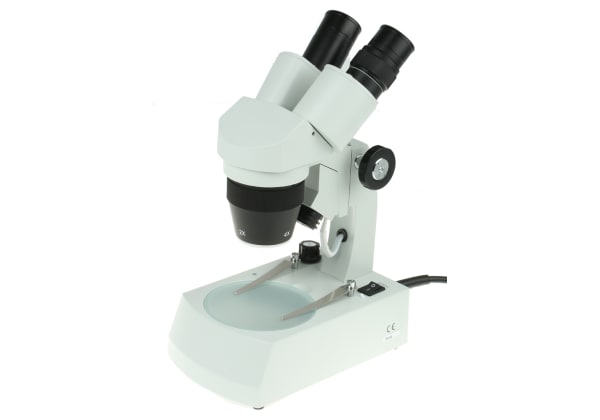- Published 24 Jan 2023
- Last Modified 18 Jun 2024
- 5 min
What are Ultrasonic Cleaners & How Do They Work?
Discover all you need to know in this handy guide from RS.
Published March 2022
We will cover how ultrasonic cleaners work, their advantages and why they're useful, and where they can be used. We also offer some handy tips you should be aware of, to ensure you can get the most out of your cleaning device.
What is an Ultrasonic Cleaning System?
When quick, thorough cleanliness of a part is needed, an ultrasonic cleaner can give you maximum assurance as well as save you time. They can intricately clean even complex surfaces and can significantly reduce cleaning times in most cases. When you need precision cleaning without intensive labour, an ultrasonic cleaner is a vital addition to your workspace.
RS PRO provides a range of high-quality ultrasonic cleaning units to suit your needs.
What are the Advantages of Ultrasonic Cleaners?

Ultrasonic cleaning combines ultrasonic waves with an appropriate cleaning solution. This cleans objects in a unique way that is capable of cleaning more thoroughly and with far less abrasion than other methods.
The cleaning process utilises high-frequency sound waves which cause cavitation bubbles to clean dirt from the surface of an object at a microscopic level. As such, it is a fantastic way of cleaning intricate surfaces with crevices, cracks or details that are hard to reach and clean by conventional methods.
How Does an Ultrasonic Cleaner Work?
It is important to understand how an ultrasonic cleaner works to get the best results. A typical ultrasonic cleaning system will have a tank with ultrasonic transducers at the bottom of it. To avoid damaging these transducers, many ultrasonic cleaning machines will have a basket that can be used to contain components in need of cleaning. The cleaning tank is then filled with an appropriate combination of water and cleaning solution. You can find RS PRO ultrasonic cleaning baskets and accessories to suit different applications.
Typical devices will usually have a degas mode which is designed to be activated before the cleaning cycle. This will remove air from the liquid in the cleaning tank and prepare it for a more effective clean.
The liquid used in an ultrasonic cleaner is typically a combination of de-ionised water and a cleaning solution or detergent suitable for the task at hand. The right cleaning solution greatly increases how effectively an ultrasonic cleaner works, so RS PRO provides specialised ultrasonic cleaning fluids to suit your needs.

What is Cavitation?
Cavitation is at the core of how an ultrasonic cleaner works. It is a term used to describe the microscopic process that happens during ultrasonic cleaning. The transducer causes high-frequency waves, or ultrasonic waves, that cause the rapid formation and collapse of bubbles in a liquid. These bubbles burst against the surface of an item, causing the erosion of contaminants.
Where are Ultrasonic Cleaners Used?
An ultrasonic cleaning machine is the ideal cleaning system for jewellery, spectacles, watches, and similar items as it can thoroughly clean otherwise unreachable places. It is also ideal for sterilising certain medical instruments. They are even used to thoroughly clean engine and machine parts.
The only caveat is that the items being cleaned must be suitably waterproof. As such, you can find an ultrasonic cleaner employed in all kinds of work environments, from electronics production to aerospace and automotive industries.
They are suitable for cleaning the following materials:
- Most plastics
- Most metals other than tungsten
- Precious metals
- Glass
How To Use an Ultrasonic Cleaner
If you are wondering how to use ultrasonic cleaners, luckily, they are simple devices to use.
- Add your chosen cleaning solution to the bath, to a level where it will not overflow when the item being cleaned is added.
- Once the solution is added, place your item into the basket.
- Now, simply turn on the cleaner and wait until the process has finished, and then remove your item.
Safety Tips
When using an ultrasonic cleaner, it is important to use with precaution. That is why it is key to read the manual before using to ensure safe use when operating. Other things you should consider when using an ultrasonic cleaner include:
- Never reach into an ultrasonic cleaner while it is operating, this can lead to the risk of burns, but also skin penetration from the cavitation.
- Use the recommended cleaning solution temperatures provided by the manufacturer.
- Consider wearing gloves when removing baskets or items from the cleaner to protect from heat and chemicals, as the solutions may cause skin irritation.

Are Ultrasonic Cleaners Suitable for All Jewellery?
Ultrasonic cleaners can have a damaging effect on pearls and soft gems such as topaz or opal. It is also worth noting that where hard gems are closely set together, the vibration of ultrasonic cleaning can cause them to collide and chip at one another, potentially causing damage.
A professional should be consulted if you have any doubts about whether precious jewellery is suitable for ultrasonic cleaning.
RS PRO provides watch holders and ring holders specifically designed for jewellery cleaning purposes.


